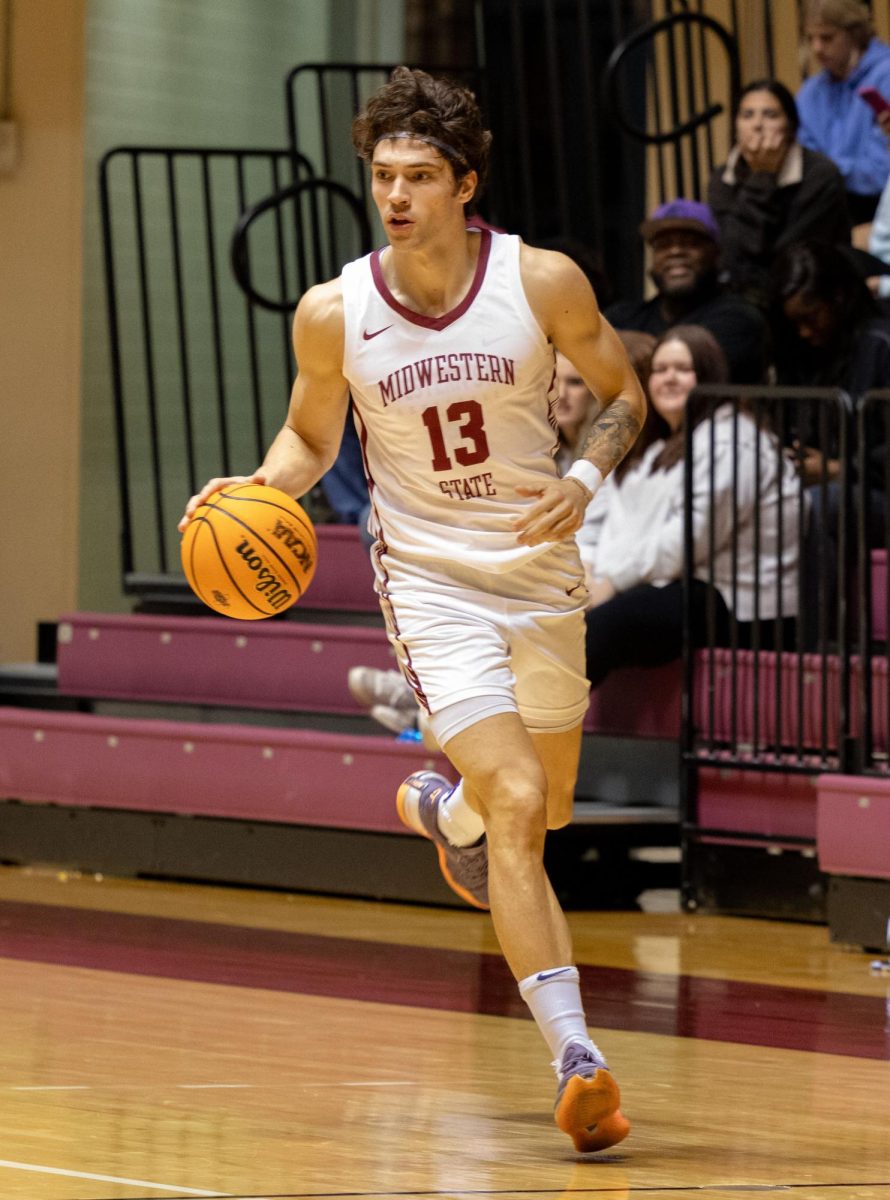Todd Samuelson, curator of rare books and manuscripts at Cushing Memorial Library and Archives at Texas A&M University, will visit the Wichita Falls Museum of Arts on Nov. 13 from 6-8 p.m. He will be analyzing selections from Moffet Library’s Nolan A. Moore III Heritage of Print Collection and discussing the way that physical objects gather meaning over time, and how books contain so much more than the words they contain.
“Dr. Samuelson is an expert on the history of text,” Cortny Bates, associate university librarian, said. “He will have something to teach anyone who attends.”
Samuelson will be analyzing certain selections from the exhibit, and after showing Samuelson a booklet of some pieces in the Moore collection, Bates said he was eager to make an appearance.
“Even if no one shows up, I’ll have fun,” Bates said. “And I’ll learn something. And eat snacks.”
The collection displays the history and heritage of information being shared through the medium of print. It was the work and collection of Nolan A. Moore III, who attended MSU for two years and attended the University of Texas at Austin for two more years.
Bates said we benefited from good fortune to inherit this collection after Moore passed away.
“When Moore died, it was a toss-up between Midwestern and UT-Austin, who would get the collection,” Bates said. “Moore’s family still lived in the area so they decided to donate it here.”
Samuelson said Texas A&M has its own rare collection.
“The collections are quite similar, almost sisters of each other. The collections show us how sharing of information evolved.”
Samuelson said the exhibits also share a parallel to modern patterns of information sharing.
“It is interesting to see us moving from print to sharing information digitally, and being aware of the past,” Samuelson said.
Samuelson said the same thing happened between handwritten text and printed text in the 16th century.
“The two worked together in interesting ways. People were still accenting books by hand for centuries after printing was invented. The same thing is happening now,” Samuelson said.
The collection moves through the history of print chronologically, beginning with prehistoric etchings and cave paintings, moving on to early novels, bibles, even the first printed maps for Captain Cooks explorations, and eventually showcasing more modern pieces, such as Dr. Suess books and reprints of the original Action Comic series.
“It helps us understand the past, what it might have felt like to these things for the first time,” Samuelson said.
Samuelson said the printing press, a press Bates said MSU was lucky to have, was the most important invention in hundreds of years at its time.
The exhibit showcases many interesting and rare pieces of history including a centuries-old wooden printing press, the first model made, of which there are only 70 in the entire world. Another amazing stroke of luck, Bates noted.
“The printing press was found in an abandoned barn. It’s pretty awesome, and very lucky,” Bates said.
“In the year 1455, when books had to be handwritten,” Samuelson said, “it took almost a year for a novel to be reproduced, and there were only 20-30 thousand books in the world. As a result, information and education were only available to the very wealthy.”
By the late 1500s, the printing press had been invented and revolutionized the process, and that number had increased to 20 million.
“You can see how availability of information exploded, and how this invention caused intellectual, political, and general education growth to absolutely soar over the centuries to come, and transformed how we interact with one another,” said Samuelson.












